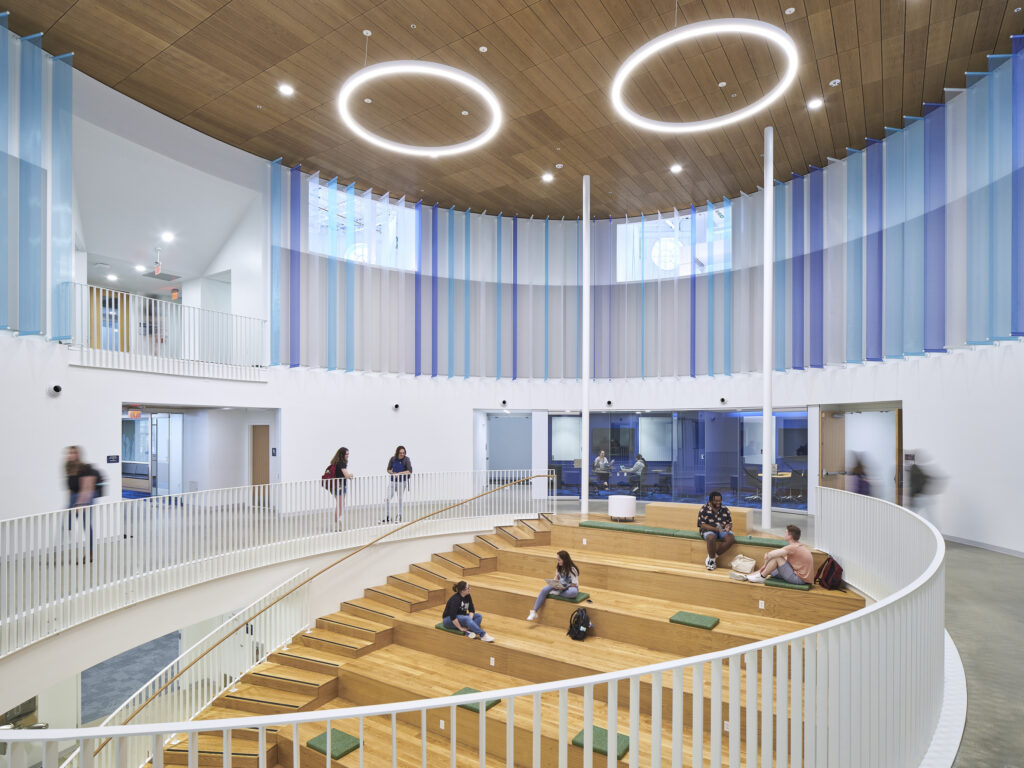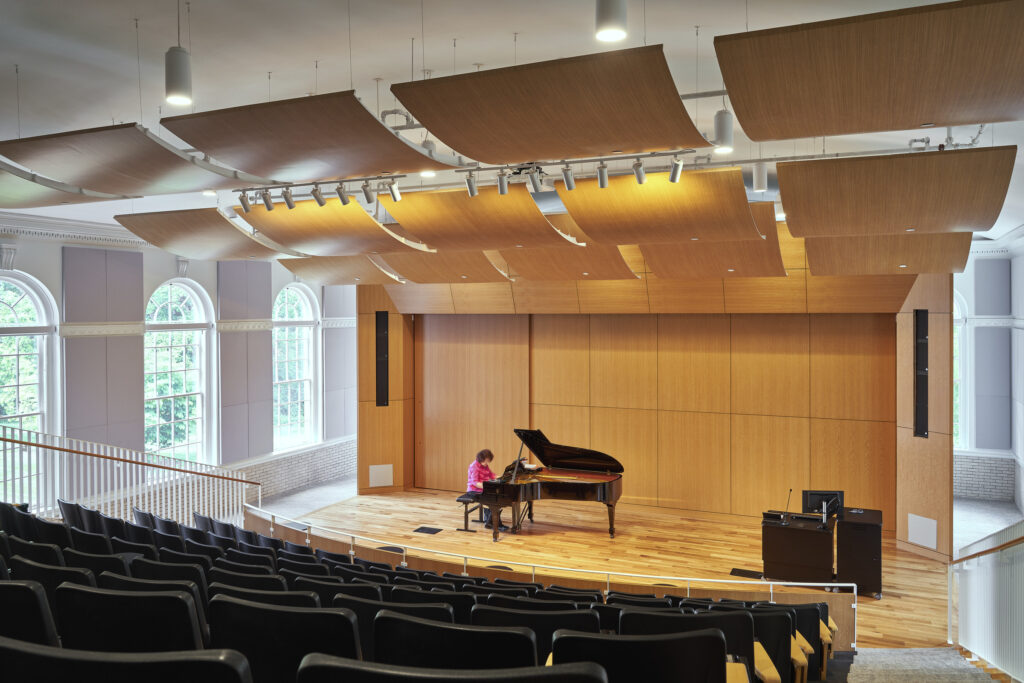
Until 2015, the social hub of the Fredericksburg campus of the University of Mary Washington was a 1928 dining hall designed by Robinson and Walford (with a 1951 addition by Walford and Wright). “Seaco” was part of the original campus plan for what was then known as the Fredericksburg State Teachers College and even until its last days, it remained the spot where students could grab a late-night slice of pizza or an early-morning coffee as they head to classes elsewhere on campus. Robinson and Walford’s original scheme featured a dome room with two grand dining halls. Its successor firm Walford and Wright added two more dining halls later to accommodate a growing student body — making it four distinct wings with a central kitchen under the dome.
In keeping with modernization plans that many campuses around the country have undertaken in the past decade to accommodate shifts in pedagogy and to attract top tier applicants, Hanbury renovated — and reinvented — Seaco for another century of vibrant campus activity. No longer a dining hall, it’s the home to the Mary Washington College of Education’s cutting edge and adaptable lifelong learning program for students, faculty, and staff. Classrooms, laboratories, faculty offices, group work rooms, a “makerspace,” a curriculum lab, and a large assembly space define its programming now.
“From the exterior of the building, you see a higher, taller center that suggests a rotunda or a grand space that the four wings extend from, where in fact, it was the mechanical and kitchen space,” said Rob Reis, AIA, design principal and design director of Hanbury. “Our strategy from the start was to invert that relationship where the solid center would become the open, central forum that would connect the wings, rather than separate them.”

The central rotunda Reis describes is now called the Forum, an open two-story cylinder with stadium stairs that symbolically and physically connects the wings at both the upper and lower levels. Part-amphitheater and part-crossroads, it defines the daily movements of nearly everyone in the building and reclaims Seaco’s historic status as a hub of activity.
Seaco’s status as a campus symbol also defined the university’s requirements for its renovation. The exterior was to be preserved, but some concessions were made to modernization such as transforming the loading dock into a new public entry. Mary Washington officials also wanted Seacobeck to be an asset to the campus for prospective students, the College of Education, and the broader university community.
Project architect Christopher Charles, AIA, believes that what is most unique about the building is that it holds the tradition of the campus with its exterior, yet it steps into the present and future with a modern and flexible interior.
“This was to become the first stop on tours for prospective students and a variety of visitors, so it was really important to have a stunning appeal to both guests and those that would spend their days here,” said Charles, noting that the flexible events space in Hanbury’s scheme is a personal favorite.

“The flexibility of space really supports the culture of today’s students and current ways of teaching, but we even created a flexible events space that could be embraced for both learning and music performance.”
The renovated Seacobeck Hall officially opened on April 7, 2022, with a celebration including a Ribbon Cutting Ceremony at the University of Mary Washington campus.
This interview has been edited for length and clarity.
Team Three is an editorial and creative consultancy based in Washington, DC.
